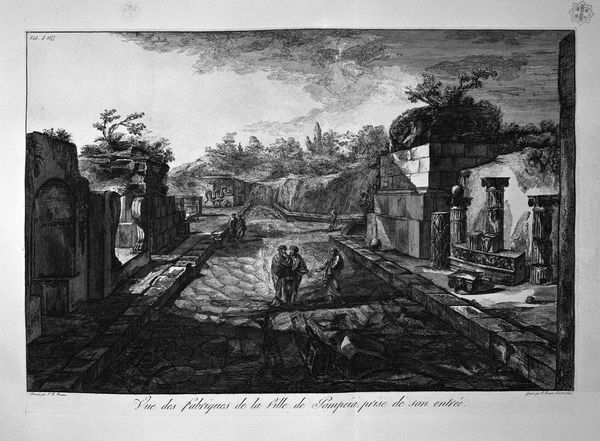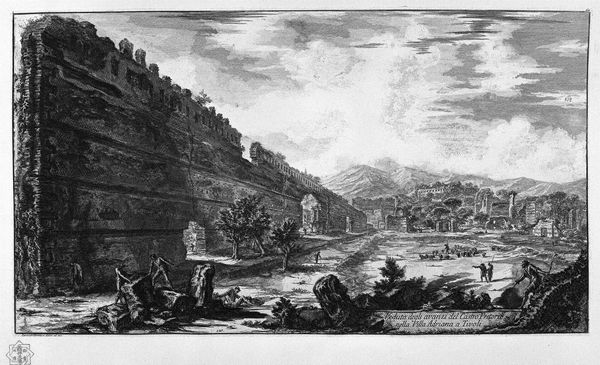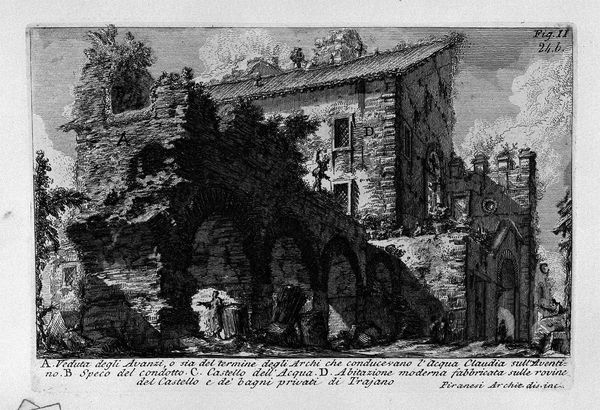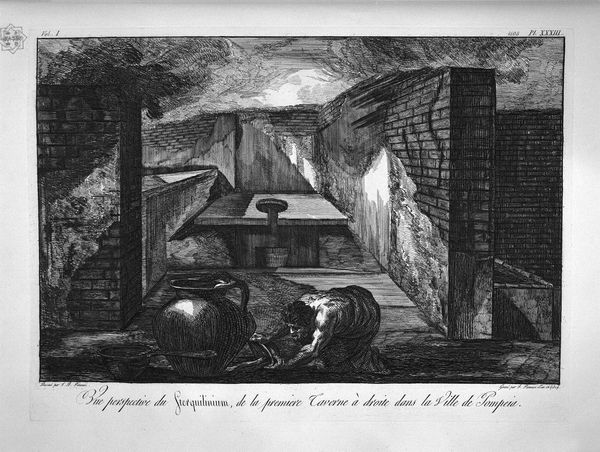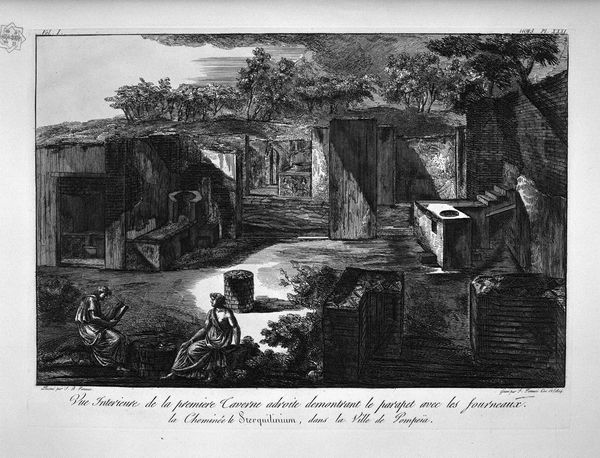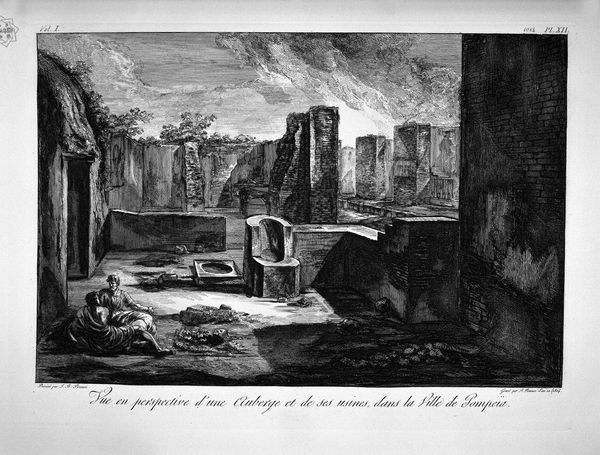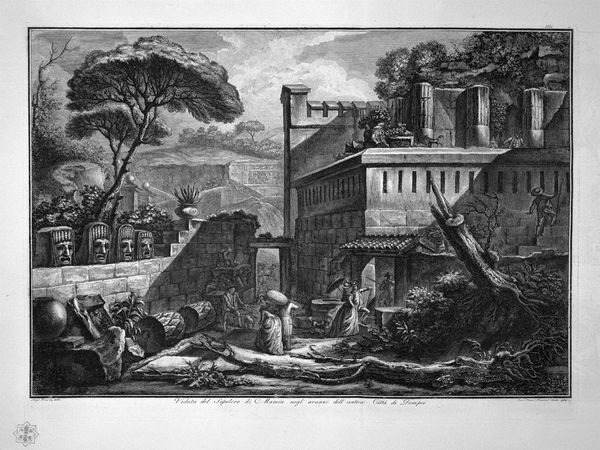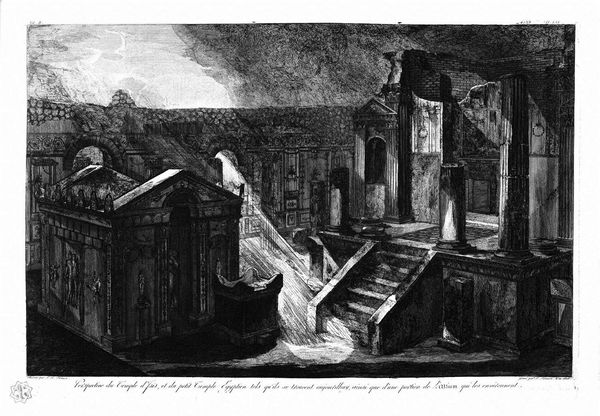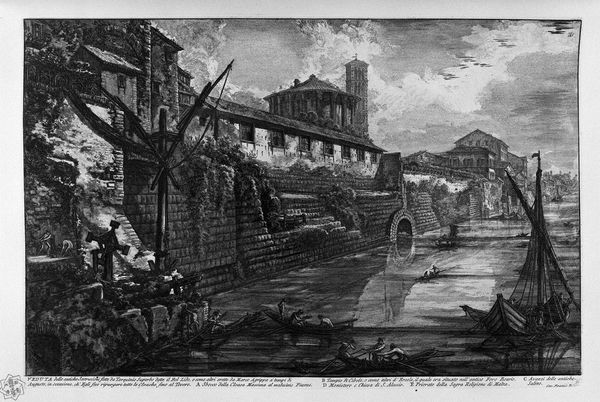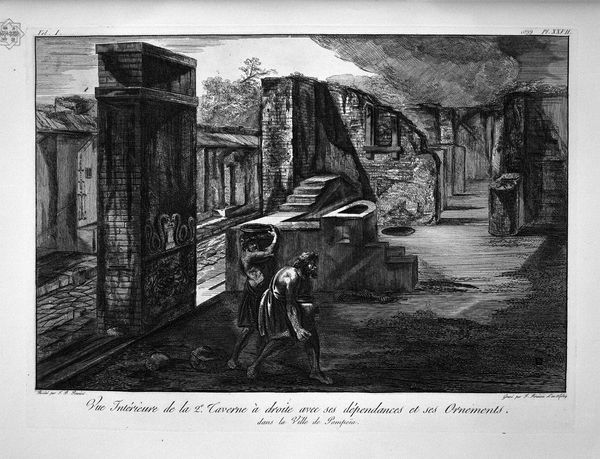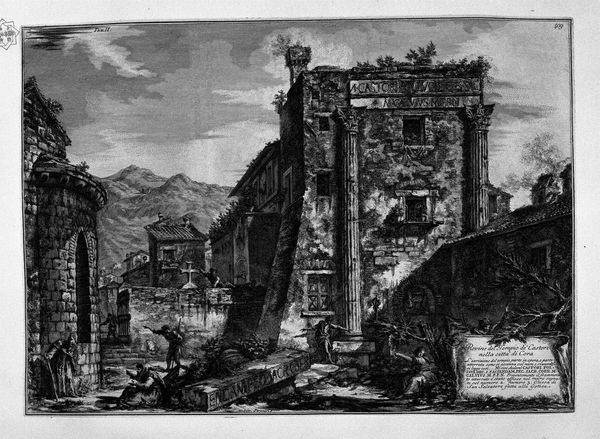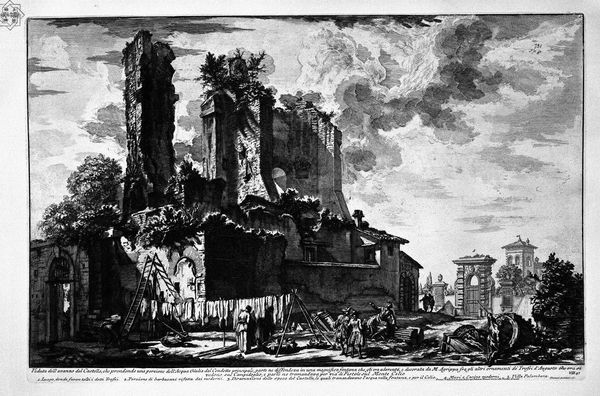
print, engraving, architecture
#
neoclassicism
# print
#
landscape
#
romanesque
#
history-painting
#
engraving
#
architecture
Copyright: Public domain
Editor: This is "Split of the buildings represented in the table above", an engraving by Giovanni Battista Piranesi. The ruins are presented in high contrast. What immediately strikes me is this sense of imposing melancholy; you really feel the weight of history here. What do you see in this piece? Curator: What a powerfully evocative work. Look at how Piranesi uses light and shadow! These aren’t just architectural remnants; they are containers of memory. Think of the cultural weight these ruins hold—Pompeii, a civilization frozen in time. Editor: So, it's more than just documenting architecture. Curator: Precisely! The visual language here evokes a feeling. Note how the architecture is intertwined with nature, both reclaiming and being reclaimed. The very lines of the engraving emphasize the grandeur and also the decay, right? Editor: Yes, the decay almost seems intentional, to enhance the sublime feeling. Curator: Exactly. And consider what ruins signify: the transient nature of power, the inevitable passage of time, the ever-present whisper of mortality. Do you think this would have resonated differently with people in Piranesi’s time? Editor: I can see that. It feels like a reminder that even the greatest empires eventually crumble. What really stays with me is the play of light – the illumination suggests hope and resurrection alongside loss. Curator: That interplay of light and dark encapsulates the human condition itself. Symbols woven in to these stone remnants. History painting by other means. We are left pondering the cyclical nature of civilizations. It makes you wonder what future generations will see in our remains, doesn't it?
Comments
No comments
Be the first to comment and join the conversation on the ultimate creative platform.
